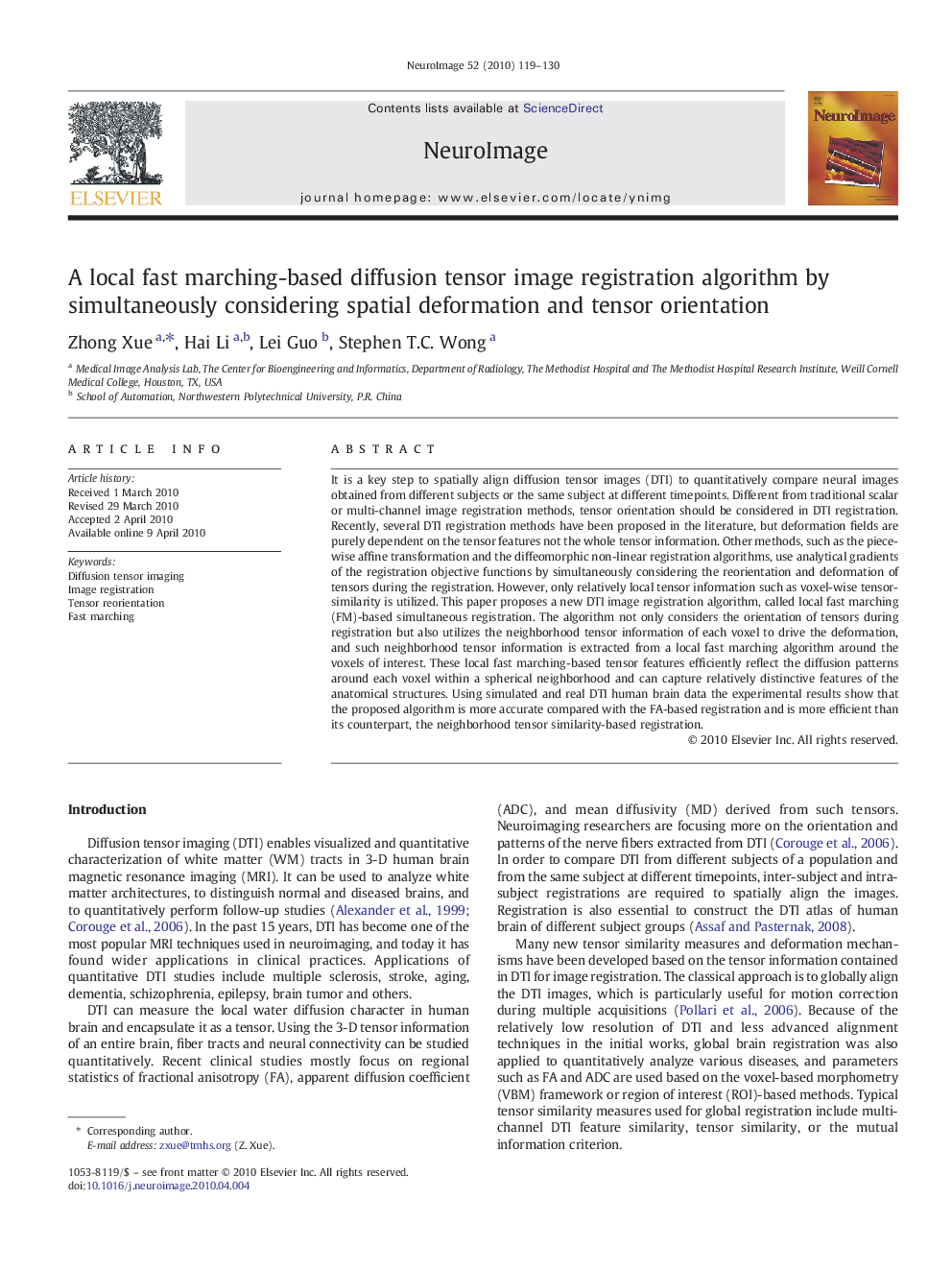| کد مقاله | کد نشریه | سال انتشار | مقاله انگلیسی | نسخه تمام متن |
|---|---|---|---|---|
| 6035454 | 1188766 | 2010 | 12 صفحه PDF | دانلود رایگان |
عنوان انگلیسی مقاله ISI
A local fast marching-based diffusion tensor image registration algorithm by simultaneously considering spatial deformation and tensor orientation
دانلود مقاله + سفارش ترجمه
دانلود مقاله ISI انگلیسی
رایگان برای ایرانیان
کلمات کلیدی
موضوعات مرتبط
علوم زیستی و بیوفناوری
علم عصب شناسی
علوم اعصاب شناختی
پیش نمایش صفحه اول مقاله

چکیده انگلیسی
It is a key step to spatially align diffusion tensor images (DTI) to quantitatively compare neural images obtained from different subjects or the same subject at different timepoints. Different from traditional scalar or multi-channel image registration methods, tensor orientation should be considered in DTI registration. Recently, several DTI registration methods have been proposed in the literature, but deformation fields are purely dependent on the tensor features not the whole tensor information. Other methods, such as the piece-wise affine transformation and the diffeomorphic non-linear registration algorithms, use analytical gradients of the registration objective functions by simultaneously considering the reorientation and deformation of tensors during the registration. However, only relatively local tensor information such as voxel-wise tensor-similarity is utilized. This paper proposes a new DTI image registration algorithm, called local fast marching (FM)-based simultaneous registration. The algorithm not only considers the orientation of tensors during registration but also utilizes the neighborhood tensor information of each voxel to drive the deformation, and such neighborhood tensor information is extracted from a local fast marching algorithm around the voxels of interest. These local fast marching-based tensor features efficiently reflect the diffusion patterns around each voxel within a spherical neighborhood and can capture relatively distinctive features of the anatomical structures. Using simulated and real DTI human brain data the experimental results show that the proposed algorithm is more accurate compared with the FA-based registration and is more efficient than its counterpart, the neighborhood tensor similarity-based registration.
ناشر
Database: Elsevier - ScienceDirect (ساینس دایرکت)
Journal: NeuroImage - Volume 52, Issue 1, 1 August 2010, Pages 119-130
Journal: NeuroImage - Volume 52, Issue 1, 1 August 2010, Pages 119-130
نویسندگان
Zhong Xue, Hai Li, Lei Guo, Stephen T.C. Wong,